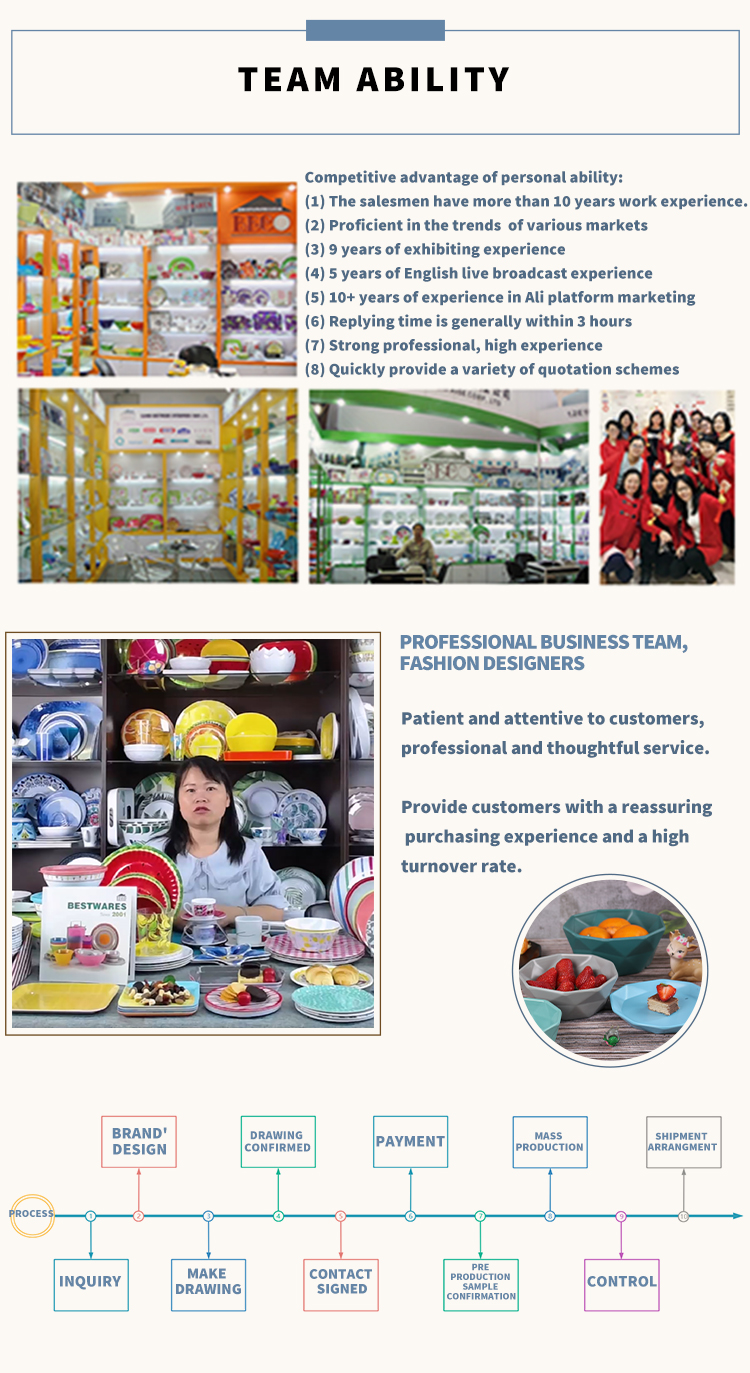In the competitive market of melamine dinnerwares, ensuring high-quality products is paramount for B2B buyers. Understanding the production process and quality control measures is crucial for selecting reliable suppliers. This article outlines the essential steps in the production of melamine dinnerwares and the critical quality control procedures to guarantee superior product quality.
1. Raw Material Selection
The production of melamine dinnerwares begins with the selection of raw materials. High-quality melamine resin, a thermosetting plastic, is the primary material used. It is crucial to source melamine resin that meets international safety standards, as this directly impacts the durability and safety of the final product. Additionally, additives such as pigments and stabilizers must be carefully chosen to ensure consistency in color and performance.
2. Melamine Compound Preparation
Once the raw materials are selected, they are mixed to form a melamine compound. This compound is prepared by combining melamine resin with cellulose, creating a dense, durable material. The ratio of melamine resin to cellulose must be precisely controlled to ensure optimal hardness and resistance to heat and chemicals. This step requires precise measurement and thorough mixing to achieve a uniform compound.
3. Molding and Forming
The prepared melamine compound is then subjected to high-pressure molding. This process involves placing the compound into molds of various shapes and sizes, depending on the desired dinnerware design. The compound is heated and compressed, causing it to flow and fill the mold. This step is crucial for defining the shape and structural integrity of the dinnerware. The molds must be meticulously maintained to ensure consistent product dimensions and surface quality.
4. Curing and Cooling
After molding, the dinnerwares undergo a curing process, where they are heated at high temperatures to solidify the material. This step ensures that the melamine resin fully polymerizes, resulting in a hard, durable surface. Once cured, the dinnerwares are slowly cooled to prevent warping or cracking. Controlled cooling is essential for maintaining the shape and stability of the products.
5. Trimming and Finishing
Once the dinnerwares are fully cured and cooled, they are removed from the molds and subjected to trimming and finishing processes. Excess material, known as flash, is trimmed off to ensure smooth edges. The surfaces are then polished to achieve a glossy finish. This step is vital for both the aesthetic appeal and safety of the dinnerwares, as rough edges or surfaces can compromise user safety and product attractiveness.
6. Quality Control Inspections
Quality control is an ongoing process throughout the production of melamine dinnerwares. Inspections are conducted at multiple stages to identify and address any defects or inconsistencies. Key quality control measures include:
- Material Testing: Ensuring raw materials meet specified standards.
- Visual Inspections:** Checking for defects such as discoloration, warping, or surface imperfections.
- Dimensional Checks:** Verifying product dimensions against specifications.
- Functional Testing:** Assessing durability, heat resistance, and impact strength.
7. Compliance with Safety Standards
Melamine dinnerwares must comply with various international safety standards, including FDA regulations for food contact materials and EU directives. Ensuring compliance involves rigorous testing for chemical leaching, particularly formaldehyde and melamine migration, which can pose health risks. Suppliers must provide certification and test reports to verify compliance with these standards.
Conclusion
For B2B buyers, understanding the production process and quality control measures of melamine dinnerwares is essential for selecting reliable suppliers and ensuring product quality. By focusing on the critical steps of raw material selection, compound preparation, molding, curing, trimming, and stringent quality control inspections, buyers can confidently choose products that meet high standards of safety, durability, and aesthetic appeal. This knowledge empowers buyers to make informed decisions and build lasting partnerships with trusted manufacturers.



About Us


Post time: Jun-20-2024